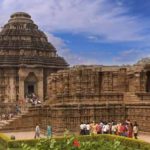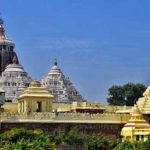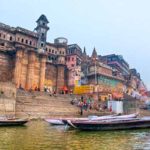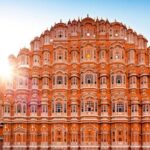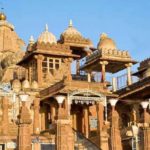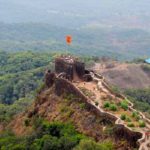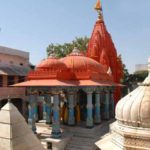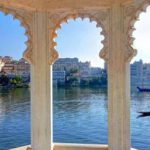10 Tourist Places to Visit Bhubaneswar is one of India’s most culturally effervescent cities, known as “The City of Temples.” The state capital of Odisha is a sprawling metropolis which, on the one hand, very skillfully maintains the balance between preserving old values and cultural heritage and, on the other, being able to adapt to modern times. Some of the finest temples, including the Lingaraja Temple and Mukteswar Temple, are situated in Bhubaneswar. Nearby places of interest include the holy pilgrimage town of Puri and Gopalpur-on-Sea, a peaceful ocean-side village. The State Museum, Bindu Sarovara and Nandan Kanan are other touristic attractions.
When visiting the 8th-10th century temples, tourists would be aware of the nature of the past. The magnificent religious structure of Lingaraj Temple, containing 50 shrines of various sizes dedicated to various Hindu deities, is one of these. These temples are exceptional and a must-visit due to the architecture and sculpture, the master carvings and the great selection of their motifs. You will see varieties of rock-cut caves that were built for the Jain monks around 1st – 2nd century B.C. while visiting the twin hills of Kumar Giri and Kumaragiri known as Khandagiri and Udaygiri.
Also, you should not overlook the Cactus Garden near the ‘Ekamra Kanan’ in Bhubaneswar, the Cactus Garden, with its large Cactus array. Among anthropologically inclined tourists, Bhubaneswar has gained popularity where one could visit the Museum of Tribal Arts and Artefacts and explore the interactive elements that include classical & folk musical instruments, traditional dress galleries, ornaments, coin necklace, ornate wine pipes. In the museum, you can also find a gallery devoted exclusively to fishing, hunting, firearms and agricultural equipment 10 Tourist Places to Visit Bhubaneswar.
Tourists can also indulge in other tourist attractions in Bhubaneswar such as the tiny but beautiful Mukteshwar Mandir of the 10th century, trying the Odishan recipes and local seafood at Kanika, the Rajarani Mandir founded around 1100 AD, popular for ornate deul and manicured gardens, the Odishan Modern Art Gallery located right near the airport, a sign of pure tranquilly, sheer tranquilly, pure tranquilly. Last but not least, visit the 64 Yoginis Temple, which is a must to see and discover Bhubaneswar’s tourist attractions.
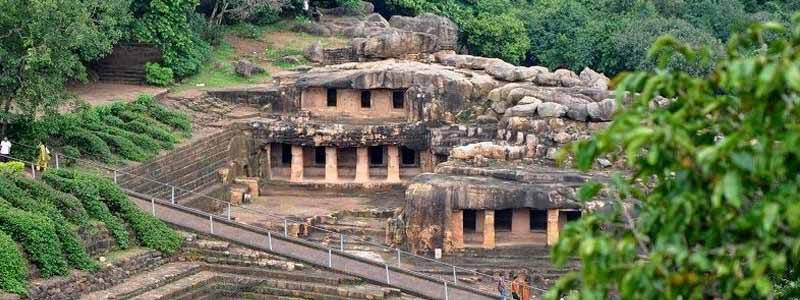
Udaygiri and Khandagiri Caves
One of the prominent rock cut sculptures excavated from the hills located on the outskirts of the town of Bhubaneswar is Udayagiri and Khandagiri. For the first time, Archaeologist A Stirling discovered these rock-cut caves on these hills of Odisha in the year 1825. Formerly known as the Cuttack Hills, the Udayagiri and Khandagiri Hills are classified by the Archaeological Survey of India as conservation historical sites (ASI).
There are about 180 caves in the two hills, according to many archaeologists, out of which only 18 caves have been technically excavated and preserved in Udayagiri and 15 caves in Khandagiri. According to the inscription, the Kumari hills were cut from the Odisha region under the orders of the 2nd century BCE Kharavela Kings. In Lena’s scripture, the inscription notes the root of paintings and sculptures in Jainism. The hill caves are sculpted out very astutely and very decoratively to show some of the most beautiful structure that sometimes takes away breath from the onlookers 10 Tourist Places to Visit Bhubaneswar.
The Hathi Gumpha, the Ananta Gumpha, Ganesh Gumpha, Rani Gumpha and many more are the well-known caves of Udayagiri and Khandagiri. The capital city of Odisha, situated near the city of Bhubaneswar, makes it a historical tourist spot for travellers to visit. The place is easy to reach and it’s just mesmerising to see the sunrise along with the topography of the property. One of the best tourism destinations in the whole of Odisha is Udayagiri & Khandagiri.
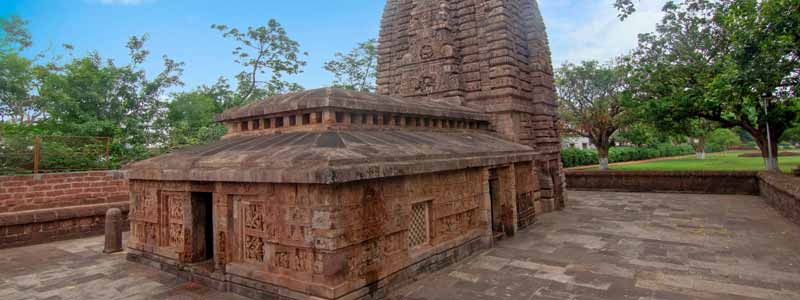
Parashurameshvara Temple
The Parashurameshvara Temple in the classical style, whose sculpture is carried out with great dash and vigour, is the oldest of all the temples in Bhubaneswar. As is seen from its rudimentary vimana, the small temple of Parashurameshvara in Bhubaneswar is believed to be a good example of the early Odishan architecture of the post-Buddhist period. While it dates back to about 750 A.D., Under the aegis of the Archaeological Survey of India, it is still in a good state of safety (ASI). Parashurameshwar Temple, according to tradition, was founded by Madhavaraja II of the Shailodbhava Dynasty. It is the first temple to have a vimana, an additional structure 10 Tourist Places to Visit Bhubaneswar.
The porch is adorned with dancing dwarfs and latticed glass, and the sanctuary is decorated with scenes from the lives of the gods. It is noteworthy for its intricate stone engraving of Siva and Parvati‘s marriage and for the elaborately sculpted medallions on its front façade. In addition to these, you can find several other sculptures representing Puranic narratives. Also located on the outside wall of the temple is an intricately carved image of the six-arm Hindu goddess Mahishamardini (Durga). The Royal Lion, the proud emblem of Kesari, is conspicuous by its absence. The Parashurameshvara Temple is missing in place of the bold, strapping animals shown on the walls of other temples. A Sahsralinga (a cluster of one big linga in the centre of a thousand miniature Shiv linga) at the northwest corner of the shrine is another fascinating feature of the temple that attracts the attention of any tourist. Every year, the Parashuramashtami festival is celebrated with gusto in the month of June/July. It is one of Bhubaneswar’s popular tourist attractions.
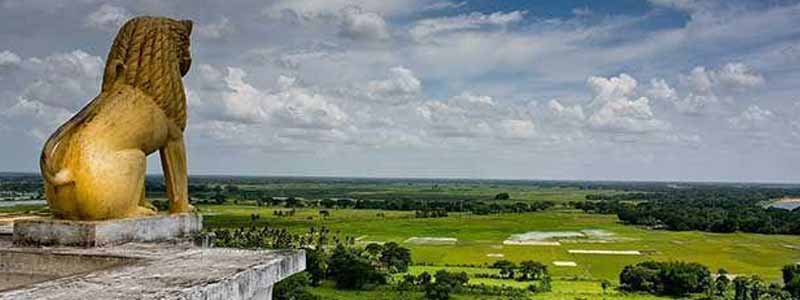
Dhauligiri
Dhauligiri Hills is a historical site situated in Bhubaneshwar on the banks of the River Daya. It is one of Bhubaneswar’s most famous tourist places and also one of Odisha’s significant heritage sites.
Set in a serene and peaceful setting, Dhauli is well known for its famous rock edicts of Ashoka. The area where the Kalinga War was fought and won by the Mauryan emperor Ashoka in 265 BC is believed to be Dhauli Hill. It is in these hills that, after the gruesome Kalinga battle, Ashoka followed the path of dharma. According to legend, during the terrible Kalinga Battle, the water of the Daya River turned red with the blood of the deceased. He was taken aback when Ashoka saw this, and he knew the aftermath of the battle. After that, He made the ideals of dharma as his primary concern.
Later, King Ashoka made Dhauligiri a renowned centre of Buddhism. Many chaityas, stupas and pillars were installed by the emperor in and around the Dhauligiri Hills. The splendid Shanti Stupa and various Edicts are the prominent spots at Dhauligiri. As per the ASI digs, several Rock Edicts, such as Nos. I-X, XIV and two separate Edicts of Kalinga were discovered. Ashoka expresses his concern for the “welfare of the whole world” in Kalinga Edict VI. The rock-cut elephant above the Edicts, installed in the 3rd century BC, is said to be India’s oldest rock-cut sculpture and it symbolises the birth of Lord Buddha.
Dauligiri Shanti Stupa, also known as the Peace Pagoda, is a Buddhist structure founded jointly by the Japanese Buddha Sangh and the Kalinga Nippon Buddha Sangh in 1972. The overall structure of the stupa is in the form of a dome and decorated with speaking stone columns, situated on the opposite hill of Dhauligiri. One can see over the stone panels the Buddha footprints as well as the Bodhi tree. The panels also include a dormant beauty fanned by female attendants, a horseback procession, and Emperor Ashoka renouncing war by giving Lord Buddha at Dhauligiri his sword.
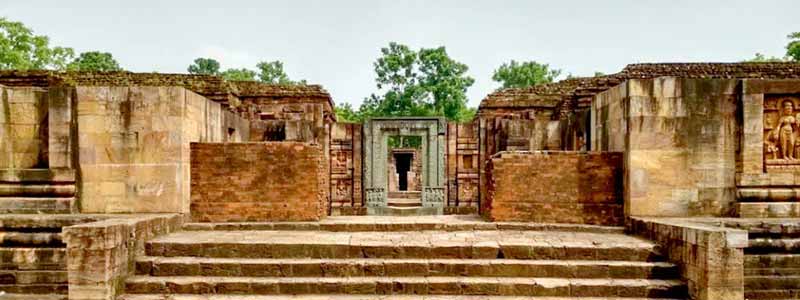
Ratnagiri
Ratnagiri, the most prominent and relatively well-excavated site of the Buddhist Diamond Triangle triad, captured the imagination of both historians and archaeologists during its 1975-1983 excavation. Ratnagiri was a rival of Nalanda as a place of Buddhist learning, according to Prof Thomas Donaldson of Cleveland University, who has written several books on the art and history of Odisha and India, and some of the Tibetan texts also consider that the Mahayana and Tantrayana sects of Buddhism originated from Ratnagiri.
One of the world’s most photographed Buddhist buildings is the beautifully carved entry gate of the Monastery. In India, Ratnagiri is also the only monastery with a curvilinear roof. The various Votive Stupas (Stupas erected on wish fulfilment), the Commemorative Stupas (Stupas erected with their relics in memory of monks), the huge Mahastupa (main stupa), Chaityagrihas (prayer halls), Buddha statues and the ornately carved rooms set on top of the hillock in the serene surroundings make one think about the grandeur of an age gone by, 10 Tourist Places to Visit Bhubaneswar.
Without mentioning the name of Mrs. Debala Mitra, then Director General of the Archeological Survey of India, who explored and excavated the site, any mention of Ratnagiri is incomplete. She states in her book “Ratnagiri” that “recent excavations at the top of the hill brought to light the imposing remains of one of the most important Buddhist establishments,” On the basis of a number of sealings bearing the legend Sri-Ratnagiri-mahavihariy-aryabikshu-sanghasya, reclaimed as Ratnagiri-Mahavihara (and not Pushpagiri-Vihara as assumed by some). The establishment experienced a remarkable rise in religion, art and architecture until twelve centuries A.D., with its nucleus dating from at least around the fifth century A.D.
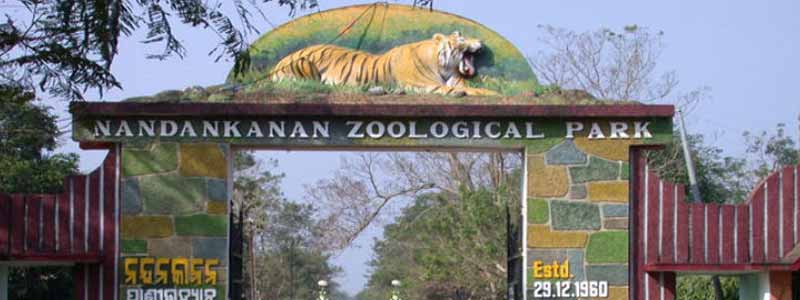
Nandankanan Zoological Park
Nandankanan Zoological Park is India’s first major zoo. Nandankanan is built right within the forest and set in a fully natural setting, unlike other zoos in the region. The animals are housed with a sense of real forest in enclosures with greenery and live without fear or apprehension of being the prey of the hunter.
Nandankanan is 15 km from Bhubaneswar, the capital of Odisha. Bhubaneswar railway station is 18 km away, while Biju Patnaik International Airport is 20 km away. Tourist cottages within Nandankanan are only accessible during the day for lodging, upon prior reservation from the Deputy Director’s Office, Nandankanan Zoological Park.
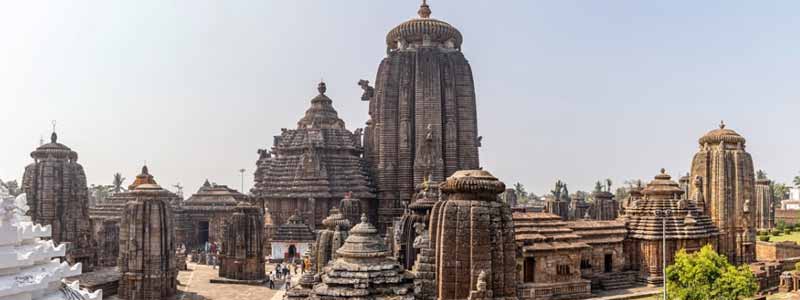
Lingaraja Temple
The Lingaraj Temple, one of Bhubaneshwar’s most famous temples, happens to be one of the city’s largest temples. The temple, built in the 7th century, is religiously dedicated to Lord Shiva, and is the only one that shows Lord Shiva’s phallic shape, believed to have arisen naturally at this location. Unlike other lingas that are known to exist in temples across India, the linga stands as high as 8 inches.
The temple provides an insight into the architectural Odissi theme, constructed precariously with stone vaults placed over the main structure. The temple allows only Hindus to join, following the traditions and cultures passed down through the years. The entire temple precinct is decorated with flowers and lights during the Mahashivratri festival to celebrate the occasion. While the temple receives a daily footfall of almost 6000 visitors, during significant events it can go up to 2 lakh.
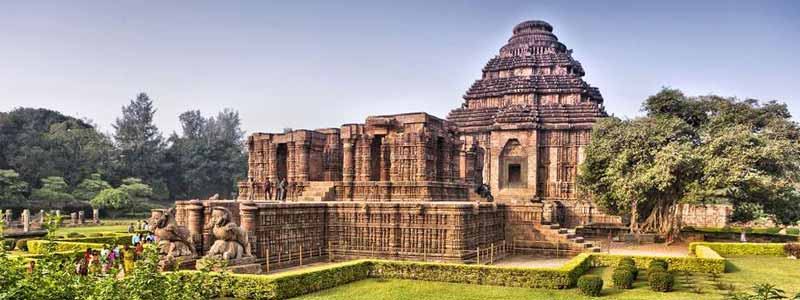
Puri
Puri is a beautiful town located in Eastern India’s state of Odisha, just 60 KMS from the capital. Located along the Bay of Bengal, it provides a stunning sunlit landscape with palm leaves and shimmering shoreline waves. The town thrives on the beach with numerous visitors, including the holy worshippers in the temples and sun basking tourists, making it one of the most admired places to visit not only in India, but throughout the world.
It is one of the Char Dham, i.e. the four most pious pilgrimage sites for Hindus, and during the glorious Rath Yatra it gathers a huge crowd every year. It has world-famous temples including the Temple of Jagannath, Temple of Gundicha, Temple of Vimala, Temple of Loknath, and many more. The panch tirtha, a bath in which one completes the pilgrimage to Puri, is also available. The city offers great work by artisans to appreciate and purchase from the local shops, along with beautiful places to visit.
It also provides a look into the lives of tribesmen and their people’s traditional Odia culture and heritage. Puri is also referred to as the city of the beach and has become a key spot among travellers around the world for short hippie trips. Tourists enjoy relaxing on the beach shore and trying out various activities such as water sports, boating, or even shoreline fishing.
While it gets very hot in the summers, the city offers a nice coastal climate throughout the year. In summers, the maximum temperature is about 36 ° C and in winters, the lowest is around 17 ° C. During wintertime, the best time to be in Puri is because it’s neither too hot nor too cold.
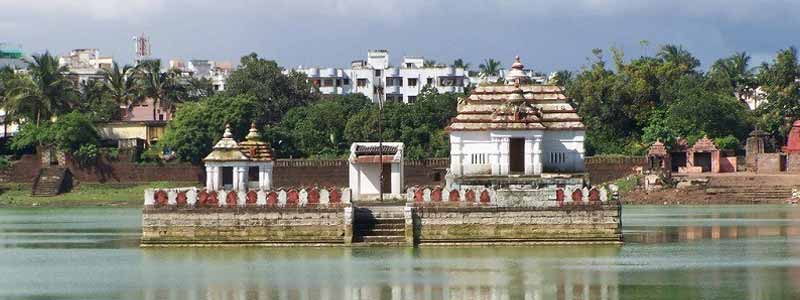
Bindu Sarovar
Bindu Sarover is considered a holy lake and one of the most popular places to see in Bhubaneshwar, located to the north of the famous Lingaraj temple. Today, for locals and visitors to come for sightseeing and relaxation, it has become a popular location. This body of water, which happens to be the largest in Bhubaneshwar, is wrapped around the architectural brilliance of many temples and shrines.
Legend has it that the lake was formed to quench her thirst with the holy water that Lord Shiva gave to Goddess Parvati. It thus follows that a person can get rid of his sins and diseases by taking a dip in the waters of this lake. In modern terms, the lake, 1300 feet long and 700 feet wide in area, is popular as the Ocean drop tank. The god from Lingaraja temple is brought to this lake for a bath during the annual car festival.
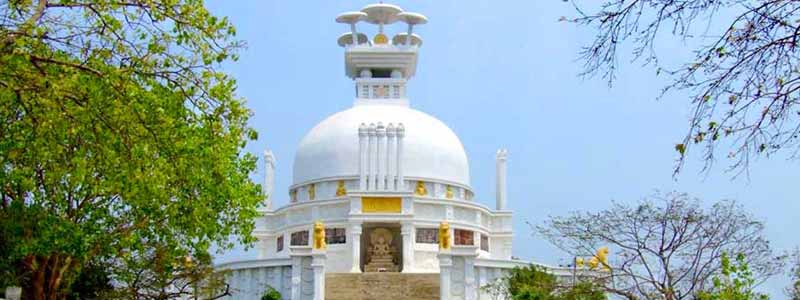
Dhauli Shanti Stupa
Dhauli Giri Shanti Stupa is a Buddhist building, also known as the Peace Pagoda, established jointly by the Japanese Buddha Sangh and the Kalinga Nippon Buddha Sangh in 1972. It was designed by the Indo-Japanese partnership, situated on the opposite hill of Dhauli Giri. It is a domed structure designed by the chief priest of Nipponzan Myohoji, who came to India from Mt. Minobu, the original holy place of the Nichiren Sect, in 1930.
With mushroom-like structures, Stupa is domed on top and decorated with ‘talking’ stone panels. The key stone panels are adorned with a reclining Buddha, an elephant procession, the bodhi tree and Buddha footprints bearing the chakra (wheel). The panels also include a dormant beauty fanned by female attendants, a horseback procession, and Emperor Ashoka renouncing war by giving Lord Buddha at Dhauli Giri his sword. The site is also home to the Saddharma Vihar temple, ancient sculptures and numerous extraordinary art styles. An old Hindu temple dedicated to Lord Dhavaleshwar, which was restored in 1972, is situated beyond the stupa.
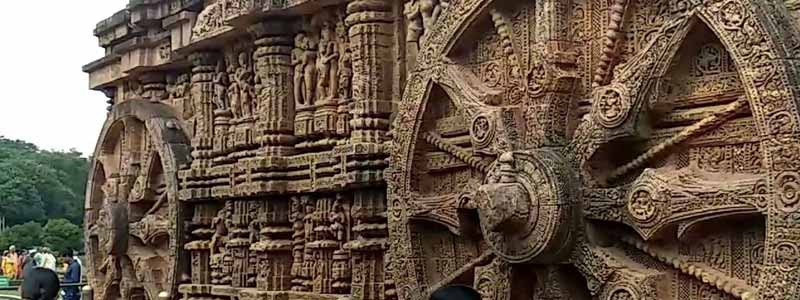
Konark
The Sun Temple at Konark is a UNESCO World Heritage Site and the pinnacle of Odisha Temple Architecture. The temple is the culmination of seven hundred years of searching for excellence. The Sun Temple at Konark, founded by King Narasimha Deva I in the 12th century AD and dedicated to the Sun God, continues to leave us spellbound with its colossal structure, symmetry, precision and intricate detailing.
The height of the Sun Temple at Konark is estimated to be about 227 feet, according to archaeologists, making it one of the tallest temples ever built in the world. What remains today, however, is the impressive but almost collapsed Jagamohana (Entrance Hall) with the sanctum sanctorum. The Natya Mandap minus the roof is the other structure that still remains amid the ruins.
The temple was built to be a Sun God chariot driven by twenty-four beautifully carved wheels and seven horses. Apart from its elegance, scientific accuracy is what captivates historians. For example, the wheels are built in such a way that the time of day can be determined by looking at the shadow cast by the sun on the wheels. Not only do the carvings of the spoke and axesls denote the things that at that time of the day one usually does. The wheels popularly known as Konark Chakra is a popular souvenir collected by the tourists visiting the temple.
Three kinds of stones were used to build the temple-the laterite stone for the boundary walls, flooring and staircase, Khondalite for the foundation and Chlorite stone for the jams and lintel doors. In the temple’s ruins, the use of iron strips to keep the structure together can be seen.

